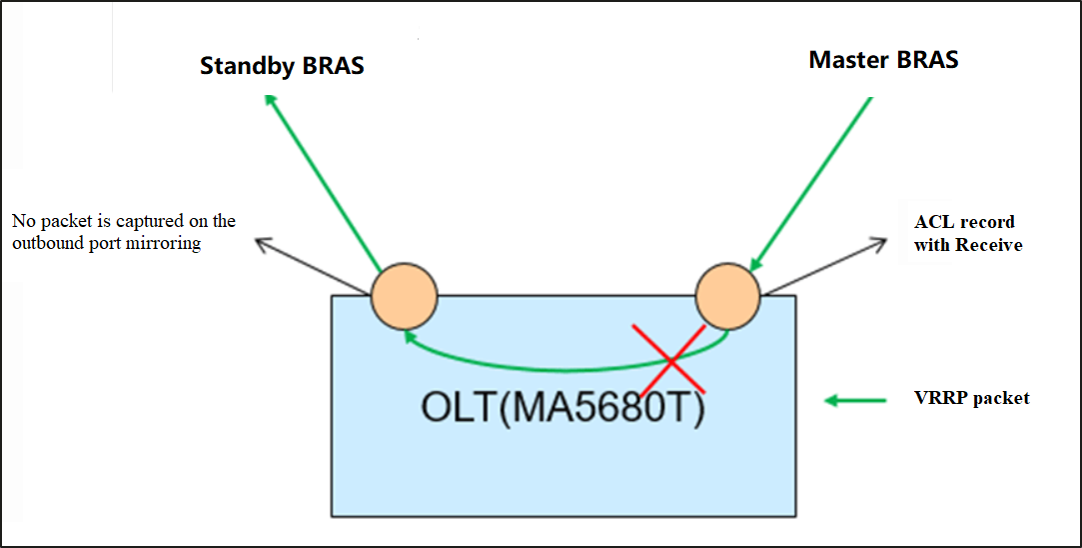Problem Description
When two BRASs are connected through one OLT, occur VRRP became two masters.
Handling Process
1. Two BRASs are in the master state. This is because the VRRP packets sent from the active BRAS to the standby BRAS are discarded on the OLT side. The standby BRAS consider that the active BRAS is faulty and then becomes the active BRAS. Perform ACL statistics on the OLT. It is found that the port connected to the active BRAS receives VRRP packets.

Perform mirror on the OLT Huawei MA5680T for example port connecting the standby BRAS. It is found that VRRP packets are not sent out. Therefore, packets are lost on the OLT, as shown in the following figure.

2. The OLT discards VRRP packets sent from the active BRAS to the standby BRAS because anti-MAC address flapping is enabled. The port connected to the standby BRAS learns the virtual MAC address first, and then receiving a VRRP packet with the same virtual MAC address on master BRAS, master BRAS discards the packet due to a MAC address learning conflict.
Query the MAC address on the OLT. It is found that the virtual MAC address of the VRRP packet is learned on the port connected to the standby BRAS. The anti-MAC flapping function is enabled on the device. Therefore, the virtual MAC address of the VRRP packet is configured as a static MAC address to prevent flapping to other ports.

The virtual MAC address is learned on the port connected to the standby BRAS because the optical path between the active BRAS and the OLT is interrupted. As a result, services are switched to the standby BRAS, and the MAC address of the original port is deleted. The re-learning is performed on the port connected to the standby BRAS. After the optical path on the active BRAS recovers, the interface connected to the active BRAS receives a VRRP packet with the same virtual MAC address. In this case, the interface discards the VRRP packet because of a MAC address learning conflict.
Root Cause
When two BRASs are connect through an OLT, they use the same virtual MAC address. The MAC address anti-flapping function is enabled on the OLT. After the port connected to the standby BRAS learns the virtual MAC address, the port connected to the active BRAS receives the VRRP packets with the same virtual MAC address. As a result, the port directly discards the VRRP packets due to MAC address learning conflicts. As a result, the standby BRAS fails to receive VRRP heart-beat packets from the active BRAS and becomes the active BRAS
Solution
Run the following command to disable the MAC address anti-flapping function on the OLT:
(config)#security anti-macduplicate disable
No comments:
Post a Comment